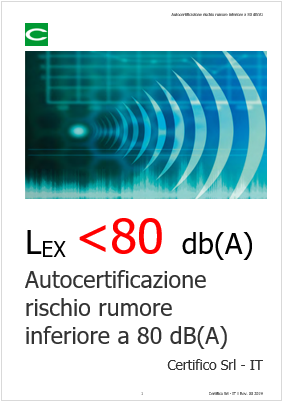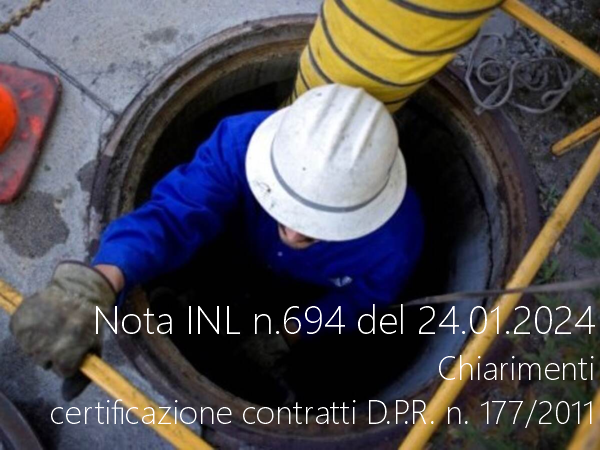Circolare 8 luglio 1998 n. 16 MI.SA.
Decreto interministeriale 10 marzo 1998 - Chiarimenti.
(GU n. 250 dsel 26-10-1998)
Collegati
Table Dose Response Assessment Tables
Notizia aggiornata al 24.09.2017
The information below presents tabulated dose-response assessments that the Office of Air Quality Planning and Standards (OAQPS) uses for risk assessments of hazardous air pollutants. Two separate tables are provided.
Table 1 presents values for long-term (chronic) inhalation and oral exposures;
Table 2 presents values for short-term (acute) inhalation exposures.
It is important to note that only for the purpose of these tables that the compound categories use the CAS number for the element. However, all compounds having that element in their chemical structure are included in the compound category.
EPA's first carcinogen risk assessment guidelines [1], published in 1986, were the product of nearly two decades of experience and scientific consensus building. EPA has since gained considerable experience in applying cancer risk assessment approaches. Concurrently, the science of risk assessment and toxicological testing has continued to evolve, and EPA has had to address situations not explicitly discussed in the 1986 guidelines, e.g., children's risk assessment. The update of EPA's carcinogen risk assessment guidelines in 2005 consolidated the Agency's experience, providing more comprehensive and transparent guidance on topics not fully developed in the original guidelines, and providing flexibility to accommodate anticipated advances in the science.
During the time between 1996 and 2005, EPA applied the principles and procedures of the draft revised guidelines on a case-by-case basis for new hazard identifications and dose-response assessments using interim draft guidelines that represented the evolution of risk assessment methods rather than a dramatic shift in methodology. Since 2005, EPA has applied the new 2005 guidelines which reflect EPA's accumulated experience and advances in our knowledge on cancer assessment. On the other hand, assessments for many substances that were prepared under the 1986 guidelines continue to be valid. Therefore, the dose-response assessments of carcinogens reflect a mixture of the application of 1986 guidelines and the more recent guidelines.
Hazard Identification for Carcinogenic Effects. EPA's guidelines recognize three broad categories of data: (1) human data (primarily epidemiological); (2) results of long-term experimental animal bioassays; and (3) supporting data, including a variety of short-term tests for genotoxicity and other relevant properties, pharmacokinetic and metabolic studies, and structure-activity relationships. In hazard identification of carcinogens under the guidelines, human data, animal data, and supporting evidence are combined to characterize the weight-of-evidence (WOE) regarding the agent's potential as a human carcinogen. The current guidelines, finalized in 2005, recommend expressing WOE by narrative statements rather than only hierarchical categories, and expressing them separately for the oral and inhalation routes. The general categories recognized by the 2005 guidelines are [2]:
Under the 1986 guidelines, this WOE was summarized as fitting one of several hierarchic categories [1]:
Group A - Carcinogenic to Humans: Agents with adequate human data to demonstrate the causal association of the agent with human cancer (typically epidemiologic data).
Group B - Probably Carcinogenic to Humans: Agents with sufficient evidence (i.e., indicative of a causal relationship) from animal bioassay data, but either limited human evidence (i.e., indicative of a possible causal relationship, but not exclusive of alternative explanations; Group B1), or with little or no human data (Group B2).
Group C - Possibly Carcinogenic to Humans: Agents with limited animal evidence and little or no human data.
Group D - Not Classifiable as to Human Carcinogenicity: Agents without adequate data either to support or refute human carcinogenicity.
Group E - Evidence of Non-carcinogenicity for Humans: Agents that show no evidence for carcinogenicity in at least two adequate animal tests in different species or in both adequate epidemiologic and animal studies.
For each HAP that has been assessed for carcinogenicity under either set of guidelines, Table 1 (PDF) (8pp, 42k) presents the category label specified by the most recent assessment (which may be via the current or past guidelines). At some point in the future, the table may also include excerpts of narrative WOEs. These WOE categories express the relative level of certainty that these agents may cause cancer in humans. The categories specifically do not connote relative levels of hazard or degree of conservatism applied in developing a dose-response assessment. For example, a substance in group C (possible human carcinogen), under the 1986 guidelines, may impart a greater cancer risk to more people than another substance in group A (known human carcinogen), yet there is a greater certainty with regard to the risk associated with the latter. EPA's WOE classifications are focused on the amount and quality of evidence regarding whether or not a substance is carcinogenic to humans, not on the level of risk a substance might present. Dose-Response Assessment for Carcinogens. Since the publication of EPA's original cancer guidelines in 1986, considerable new knowledge has been developed regarding the processes of chemical carcinogenesis and the evaluation of human cancer risk. The 2005 guidelines [2] recognize both linear and nonlinear modes of action for carcinogens. When assessing the dose-response relationship under the guidelines, cancer data in the observable range are analyzed using a common dose-response model regardless of mode of action. The method of extrapolation to lower doses from the point of departure may vary depending on whether the available data indicate a linear or nonlinear mode of action.
Under the guidelines, linear extrapolation is appropriate when the evidence supports the mode of action of gene mutation due to direct DNA reactivity or another mode of action that is thought to be linear in the low dose region. A linear mode of action will also be the approach when available evidence is not sufficient to support a nonlinear extrapolation procedure, even in the absence of evidence of DNA reactivity. Nonlinear methods are to be used if there is sufficient evidence to support a nonlinear mode of action.
For linear carcinogens, EPA's current process of estimating cancer risk is based on the unit risk estimate (URE) for inhalation, and the carcinogenic potency slope (CPS) for ingestion. The URE represents the upper-bound excess lifetime cancer risk estimated to result from continuous exposure to an agent over a lifetime at a concentration of 1 µg/m3 in air. The interpretation of the URE would be as follows: if the URE = 1.5 x 10-6 µg/m3, no more than 1.5 excess tumors are expected to develop per 1,000,000 people if exposed all day, every day for a lifetime to a concentration of 1 µg of the chemical per cubic meter of air. The CPS is an upper bound, usually approximating a 95% confidence limit, on the increased cancer risk from a lifetime oral exposure to an agent. This estimate, usually expressed in units of proportion (of a population) affected per mg/kg/day, is generally reserved for use in the low-dose region of the dose-response relationship, that is, for exposures corresponding to risks less than 1 in 100. The URE and CPS are plausible upper-bound estimates of the risk (i.e., the actual risk is likely to be lower, but may be greater). However, because the URE and CPS reflect unquantifiable assumptions about effects at low doses, their upper bounds are not true statistical confidence limits. The tabulated UREs and CPSs were developed by EPA and the California EPA, and were selected for use by a priority system.
1. U.S. EPA. 1986. Guidelines for Carcinogen Risk Assessment. 51 FR 33992-34003.
2. U.S. EPA. 2005. Guidelines for Carcinogen Risk Assessment. 70 FR 17765-17817
Fonte: EPA
Decreto interministeriale 10 marzo 1998 - Chiarimenti.
(GU n. 250 dsel 26-10-1998)
Collegati

ID 8223 | 22.04.2019 | Modello doc allegato
L'Autocertificazione rischio rumore sui luoghi di lavoro inferiore a 80 dB(A) (valore limite basso-sogl...

ID 21251 | 27.01.2024 / In allegato
Oggetto: D.P.R. n. 177/2011 problematiche sui luoghi confinati e ambienti...
Testata editoriale iscritta al n. 22/2024 del registro periodici della cancelleria del Tribunale di Perugia in data 19.11.2024